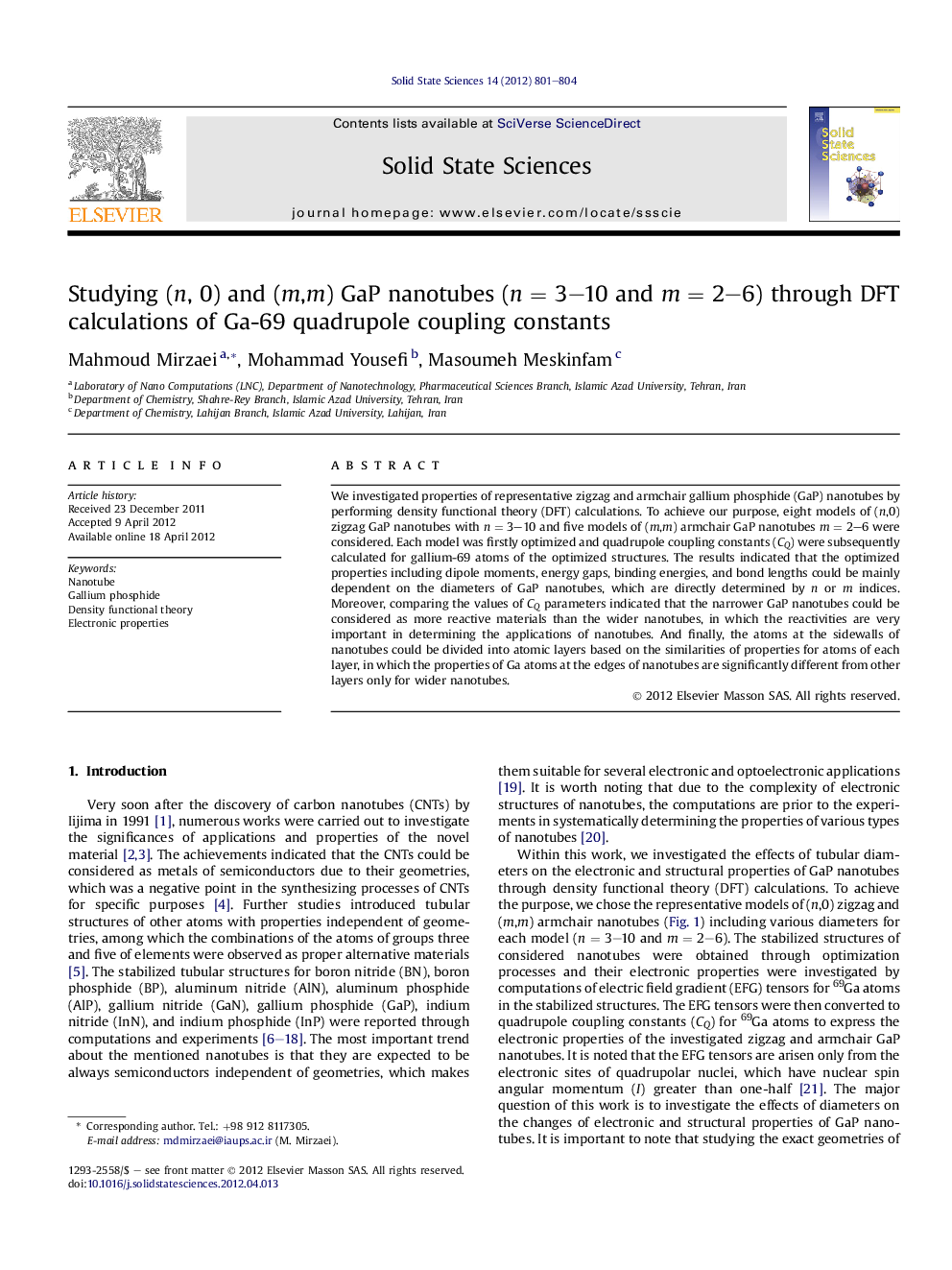| کد مقاله | کد نشریه | سال انتشار | مقاله انگلیسی | نسخه تمام متن |
|---|---|---|---|---|
| 1505074 | 993752 | 2012 | 4 صفحه PDF | دانلود رایگان |

We investigated properties of representative zigzag and armchair gallium phosphide (GaP) nanotubes by performing density functional theory (DFT) calculations. To achieve our purpose, eight models of (n,0) zigzag GaP nanotubes with n = 3–10 and five models of (m,m) armchair GaP nanotubes m = 2–6 were considered. Each model was firstly optimized and quadrupole coupling constants (CQ) were subsequently calculated for gallium-69 atoms of the optimized structures. The results indicated that the optimized properties including dipole moments, energy gaps, binding energies, and bond lengths could be mainly dependent on the diameters of GaP nanotubes, which are directly determined by n or m indices. Moreover, comparing the values of CQ parameters indicated that the narrower GaP nanotubes could be considered as more reactive materials than the wider nanotubes, in which the reactivities are very important in determining the applications of nanotubes. And finally, the atoms at the sidewalls of nanotubes could be divided into atomic layers based on the similarities of properties for atoms of each layer, in which the properties of Ga atoms at the edges of nanotubes are significantly different from other layers only for wider nanotubes.
Figure optionsDownload as PowerPoint slideHighlights
► The effects of diameters on GaP nanotubes are notable.
► Electronic properties of GaP nanotubes are similar for wider nanotubes.
► The reactivities of narrower and wider GaP nanotubes are different.
Journal: Solid State Sciences - Volume 14, Issue 7, July 2012, Pages 801–804